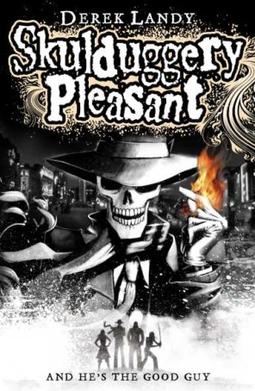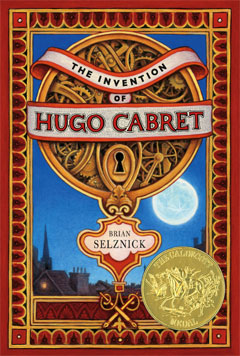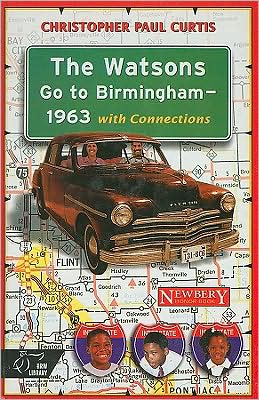Appelt, K.(2008). The underneath. New York: Atheneum Books for Young Readers.
A lonely, chained up hound dog name Ranger
howls in the Piney Woods of far East Texas and it was a calico cat with kittens in her belly that
heard and understood his call. Together,
they lived under a porch that belong to Ranger’s owner, Gar-Face in the
Underneath. The only rule that the kittens
had to follow was to not leave the safety of the Underneath and go into the
open. It was not safe for them there
because if caught then Gar-Face could hurt them. Then one day, Puck broke the rule and left
the underneath and was caught by Gar-Face.
This leads to a series of events that changes everything for Puck,
Sabine and Ranger.
The characters
of this story beautifully written. A
hound dog and a small calico cat becoming best friends. Her kittens are survivors, the readers
develop a strong emotional connection with them for the beginning. It is through the descriptive words of Appelt that
you develop the feelings. The setting of
this story is also very important to the story.
You can picture how it was to live in the Underneath with the smells,
sounds and sights of the bayou through the words as well.
Here is a link
to a book trailer for the book: https://www.youtube.com/watch?v=eZ4Ds1Yub3Q
Here is a
website link for a pdf for a reading guide and activities: https://www.teachervision.com/tv/printables/simonschuster/TheUnderneath_RG.pdf
The Graveyard Book

Gaiman, N. (2008). The graveyard book. New York: HarperCollins Publishers.
The Graveyard Book

Gaiman, N. (2008). The graveyard book. New York: HarperCollins Publishers.
On a foggy
night, a toddler walks into a graveyard.
His family was just murdered and he is escaping from the man who just
committed the murder. It is there that
the toddler is welcomed into a new family.
The ghosts and the other supernatural of the graveyard have agreed to
raise him as one of their own and grant him Freedom of the Graveyard. This means that he can walk through walls and
graves, and when he is in the graveyard, he will be invisible to most
humans. Nobody “Bod” Owens grows up in
the graveyard. As Bod grows up his adventures
continue in the graveyard and if he leaves then the man who killed his family
will come after him. When Bod is
fourteen, he comes face to face with the man who killed his family and tricks
him. Bod loses his Freedom of the Graveyard powers at fifteen and leaves the
graveyard.
The theme of
the story is good vs. evil. Jack has
been wanting to kill Bod since the night that he murdered Bod’s family and he
has not stopped looking for him. Bod has
the protections from the supernatural in the form of the Freedom of the Graveyard
and Silas, his guardian. The character of Amber also plays important part in
Bod’s life. The setting of a graveyard
is also important because we see how it shapes Bod and his decisions and it
brings the living and the non-living together.
Here is a link
with the author, Neil Gaiman reading his book:
https://www.youtube.com/watch?v=sOF01vb4Rec
Here is a link
for lesson plans and teacher resources: http://www.lessonindex.com/The_Graveyard_Book_by_Neil_Gaiman.htm
Rapunzel's revenge

Hale, S. & D. (2008). Rapunzel's revenge. New York: Bloomsbury.
There lived a
little girl named Rapunzel and her mother Gothel. She would have dreams of a family and she
would asked her Mother Gothel about them.
Mother Gothel’s answer was always to just to ignore them. Rapunzel played in a beautiful garden and
came across a wall and she wanted to see what was on the other side so on the
day of her twelfth birthday, she did.
That is when everything changed for Rapunzel. She discovers that the
Mother Gothel actually took her away from her parents for debt that they couldn’t
pay. For her punishment, Mother Gothel
locked her away in a room inside a tall tree.
Over time, Rapunzel’s hair grew and she was able to braid it and she was
able to escape. During her escape, she meets Jack and they go on adventures and
rescuing others using her braids. At the
end, Rapunzel confronts Mother Gothel and she is reunited with her mother.
The plot of the
story is different than the Rapunzel story that everyone is familiar with. This Rapunzel wants revenge and she means
business. She is a heroine and not a
princess. Rapunzel and Jack ride horses
around the Wild West and take on villains and overcome obstacles. It is the characters that make this story
fun! Rapunzel is not your ordinary
princess and the characters that she confronts are all very special and very dynamic
and make the story fun and exciting.
Here is a link
to a book trailer: https://www.youtube.com/watch?v=6kA_IMYdfmk
For a writing
activity, students can write a story as to what happened next for Rapunzel.
Babymouse Rock Star

Holm, J. &
M. (2006). Babymouse. New York:
Random House.
Babymouse
dreams of being a rockstar. She is flute
player in her school band but she is a horrible flute player. Even Felicia Furrypaws is a better player
than Babymouse. Babymouse practices all
the time but she doesn’t get better. The
band is preparing for an upcoming concert and Babymouse does not want to be
last chair again. Luckily, Babymouse
gets the help from Penny Poodle, who is also a victim of Felicia
Furrypaws. She shows Babymouse how to
feel the music with her heart and the right way to use her imagination.
The characters
are what makes Babymouse so well liked by readers. They seem real and very likeable. Babymouse has problems that readers can
relate to and want for her to overcome them.
The plot of Babymouse Rockstar is very original. Readers see that Babymouse has a problem and
how she is able to solve it and we see how her imagination can help her resolve
her problem.
Here is the
link to meet the character Babymouse: https://www.youtube.com/watch?v=LPWcnSuYFoM
Here is a link
for a book talk video created by two little girls: http://www.schooltube.com/video/32e7841261ac4ab4be16/Babymouse%20Rock%20Star
Skulduggery Pleasant

Skulduggery Pleasant

Landry, D.
(2007). Skullduggery Pleasant. New
York: HarperCollins Publishers.
At the age of
twelve, Stephanie Edgley has inherited her Uncle Gordon’s estate, his assets
and his royalties from his books. It is there at her Uncle’s house that she
meets Skulduggery Pleasant when he comes to her rescue from a man who wants a
key. It is then she learns about the friendship between Skulduggery and her
Uncle Gordon. Skulduggery tells her about
a world of magic and sorcery. She ends
up going with Skulduggery as his partner and together, they discover that her
Uncle was actually murdered. So,
together along with many their magical allies try to prevent the unleashing of
ancient gods and the threat of a war.
The theme of
this fantasy book is good vs. evil. It is a mystery book that has magic and
sorcery. This story is different from
other fantasy books because one of the main characters is Skulduggery, a
skeleton who is part of a team fighting against an ancient threat of evil. Stephanie is his twelve year old partner who
is quick wit and together they make a team to save the world from the ancient evil.
The following link will take you to a teacher’s
resource that you can use for reading groups:
Another link for teacher’s resources: http://www.edhelper.com/books/Skulduggery_Pleasant_Scepter_of_the_Ancients.htm
The Invention of Hugo Cabret

A big guy took my ball

The Invention of Hugo Cabret

Selznick, B. (2007). The invention of Hugo Cabret. New York: Scholastic Inc.
Hugo
Cabret is an orphan who lives in train station as an apprentice clock keeper. Hugo finds his father’s automaton in the
ruins of a burned-downed museum. He also
had his father’s notebook but the old man, the owner of the toy booth had
caught Hugo stealing from him so he took it from him. Pappa George gave Hugo a job in order to earn
the notebook back from him. It is at
Pappa George’s toy booth is where Hugo meets Isabelle. They discover that Isabelle has a key that
starts the automaton. Together, they
watch as the automaton draws a picture then signs the picture as George Melies,
who is known as Pappa George. Hugo
discovers that George Melies was a magician who changed how movies were
made. At the end of the novel, Hugo’s
life changes because of the machinery of world was working in harmony.
The
plot of this novel is constantly moving.
Readers see the inter-workings of the characters and how they go
together as well. It is logical that
Hugo and Pappa George work together in his toy booth with machinery. Pappa George gives glimpses of his magic
through card tricks that make Hugo curious and wants to learn them. It is through Hugo’s and Isabelle’s
determination that they are able to set Pappa George free and able to share his
love of the magic of movie making. The
illustrations also play a huge part in this story. Since the illustrations also give the
appearance of a movie that George Milies would create and it takes the readers
to a different place and time.
There
are so many different kinds of activities that students can do for this
novel. They can create their own
retellings through Movie Maker, Claymation and through iMovies.
Teachers
can also find great resources from the following links:
http://www.teachprimary.com/learning_resources/view/ks2-book-topic-hugo-cabret
Lunch Lady and the author visit vendetta

Lunch Lady and the author visit vendetta
Krosoczka,
J.J. (2009). Lunch lady and the author
visit vendetta. Random House.
It is Author Visit Day at school for
Dee, Terrence and Hector. The author of
the Flippy Bunny books, Lewis Scribson is coming to the school and Hector is a
big fan of his stories. As Lewis
Scribson is setting up in the gym, that is where he meets Coach Birkby. During the visit, Lewis Scribson wouldn’t
sign Hector’s book because it is ripped.
It seems that after the author’s visit, they notice that Coach Birkly is
missing. After some investigating, the
Lunch Lady and Betty discover that there have been other disappearances of
Coaches from other schools that Lewis Scribson has visited. It is through team work that Dee, Terrence,
Hector, Betty and the Lunch Lady are able to rescue Coach Birkby and free the
other coaches that are under Lewis Scribson’s spell.
The
characters really bring excitement to the story. You are cheering and booing as Lunch Lady is
righting the right and taking care of the wrong-doers in this wonderful series
of graphic novels. The theme is easy to
distinguish. The good vs. evil theme
helps early readers develop their sense of expression and articulation. Overall, it is a fun graphic novel to read!
Here
is a link introducing readers to the Lunch Lady series: http://youtu.be/bWLFSW839tY
Here
is a link to an educator’s guide to graphic novels from the Publisher: http://www.randomhouse.com/catalog/teachers_guides/9780375860942.pdf
A big guy took my ball

Willems,
M. (2013). A big guy took my ball! New York: Hyperion.
Piggy
was playing with a ball when a big guy came and took his ball. Piggy was so upset that he went to his best
friend, Gerald, an elephant to get his ball back. Gerald is not happy with it and tells Piggy that
he is big too and that he will get it back.
He goes but sees that a bigger guy has it and comes back without Piggy’s
big ball. Together, they discover that
even Big guys do not have anyone to play with them. At the end, Piggy, Gerald and Whale have big
fun together.
The
theme of the story is friendship. Piggy
and Gerald are best friends. Readers can
relate to them and share their adventures and experiences. They can see how Piggy and Elephant deal with
problems and how they solve them together.
The characters are so loveable and so charming. Readers cannot help themselves to want to
read more about them and share their adventures with them.
A
Mo Willems author study would be a great
way for teachers to introduce more of Willems’ books to early and developing
readers. The easy to read stories make
them a favorite in Kindergarten and First Grade classrooms.
Here
is a great link for more resources on Piggy & Elephant books:
Here
is a link for a reading of A big guy took
my ball: http://vimeo.com/85850124
